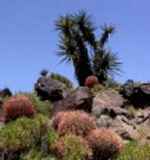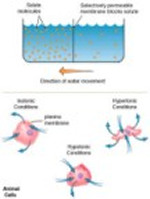
For a printable copy of this page click here

Scenario: A brief look at how organisms are adapted to their environment, with particular emphasis on thermoregulation and water conservation strategies for living in stressful environments (the desert and tundra).
|
Icon
Key:
|
|
|
|
|
 |
Fire
& Ice Desert Tundra Thermoregulation Counter-Current Exchange Loop of Henle |
Examples of In-Class Discussion/Thought Questions:
Lab 2: Body Shapes influence the rate of heat gain of loss in a predictable way.
Lab 3: How is metabolic rate influenced by ambient temperature?
Lab 4: How do various factors influence the passage of materials through a membrane?
Corresponding Essential Study Partner Segments:
The Essential Study Partner is part of the McGraw-Hill Web Site.
To access it go here. Then follow these relevant paths below:Left click into Ecology > Biosphere> then you have a choice of a variety of topics
Also try:Cells > Cell Membrane > Diffusion 



Cells > Cell Membrane > Osmosis 

Cells > Cell Membrane > Active Transport 
Animals > Osmoregulation > Introduction Animals > Osmoregulation > Kidney Function
There are also animations
available on:
![]() Diffusion
Diffusion
![]() Active
Transport
Active
Transport
![]() Osmosis
Osmosis
The site for your textbook Life by Ricki Lewis
 source |
The Desert Biome This site provides general information concerning the climate, plants, and animals of the desert biome. In addition, the site provides some interesting facts on the desert biome, as well as links to other, related, websites |
 source |
Mojave National Preserve Website Here is your source to discover Mojave National. Click on the links on the left-hand margin to learn more about the Mojave Desert--the Desert Ecology link and the Desert Plants and Animals link are epesically informative! |
 source |
McGraw-Hill Tutorial on isotonic, hypotonic, and hypertonic solutions (requires shockwave, must click on downward pointing gray arrow at the bottom of the page) |
 source |
Urine Concentration - This is a more detailed animation and explanation of how the nephron works from the ESP that accompanies a physiology textbook. If you are the kind of person that needs or wants more detail, this might be fore you. |
| Thermoregulation - Maintenance of a constant internal body temperature independent from the environmental temperature: mammalian thermoregulation. |
The website for your textbook has flashcards organised by chapters. You are only responsible for topics discussed in class. For this scenario, flashcards with the Major Terms Introduced can be found in:
Chapter 38: Regulation of Temperature and Body Fluids
Chapter 44: Biomes and Aquatic Ecosystems